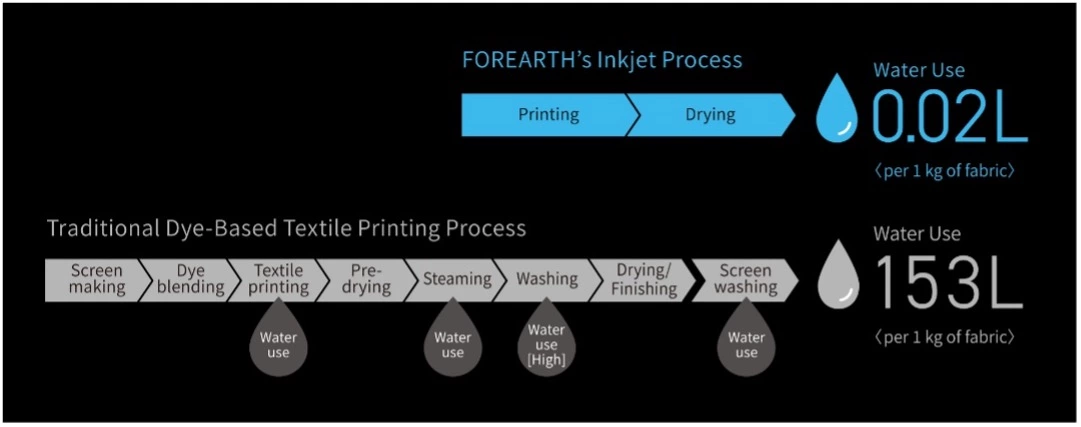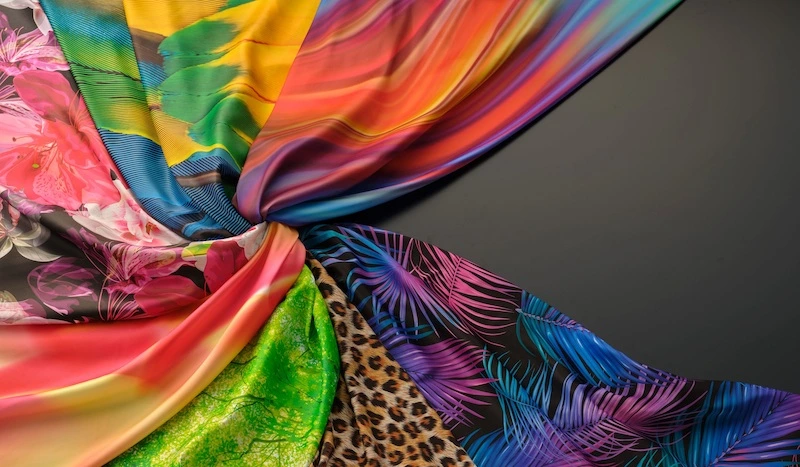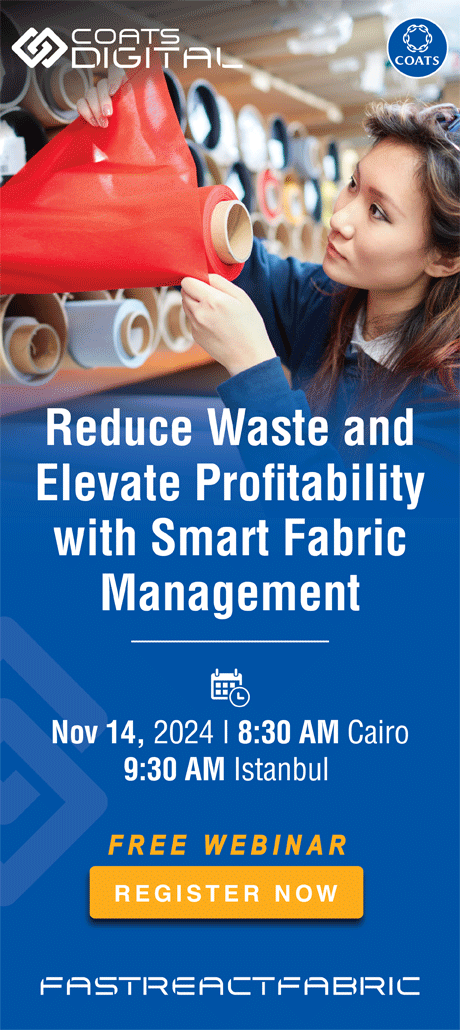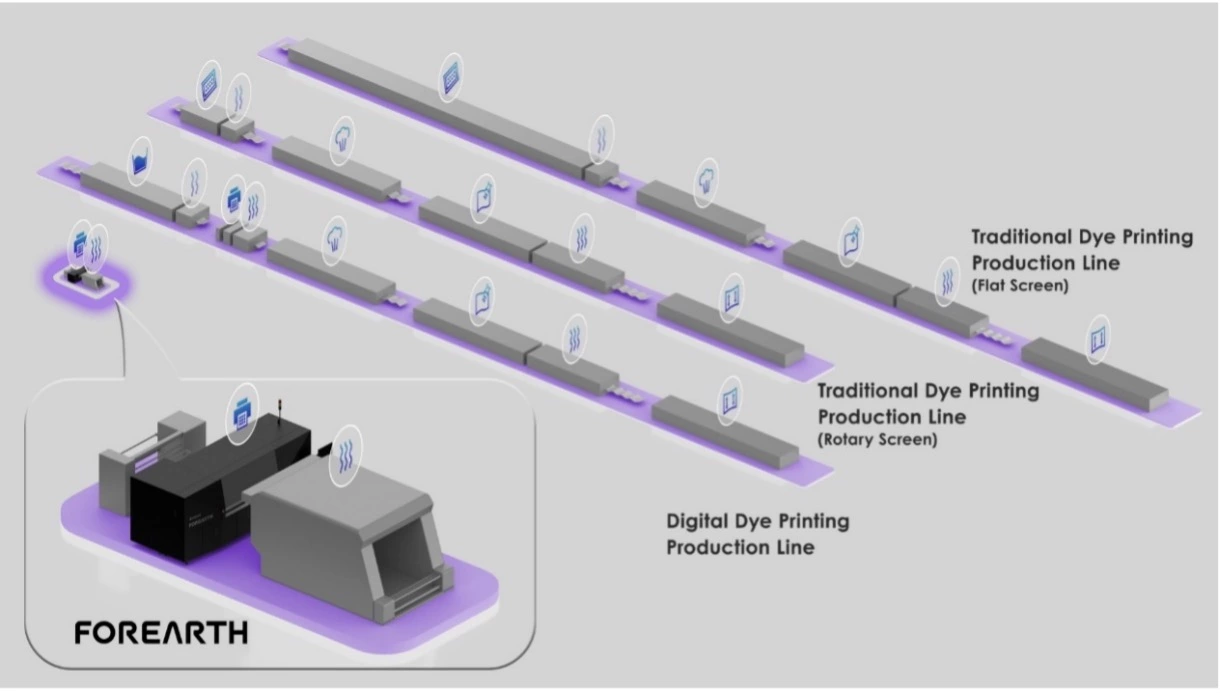FOREARTH aims to eliminate virtually all water usage from fabric printing and contributes to lowering the environmental impact of the fashion industry
Kyocera Corporation (President: Hideo Tanimoto) today announced FOREARTH, a new inkjet textile printer that aims to eliminate virtually all water usage from fabric printing. We expect this printer to contribute to eliminating printing-related water pollution, which has long been an issue in the textile and apparel industries.
Development Background
Traditional analog textile printing consumes a large amount of water, especially in the washing and steaming processes, and wastewater pollution due to fabric printing is a long-standing issue around the world. In addition, waste resulting from the mass disposal of overstocked clothing is also an environmental concern, and the textile and apparel industries are under pressure to take immediate action toward alleviating this issue. Kyocera developed our new inkjet textile printer, FOREARTH, that combines patented inkjet, ink, and printing equipment technology to contribute to solving these environmental problems.
Key features include:
Water Free Concept – Dramatically reduces water usage in textile printing.
Creative Free – Proprietary pigment ink realizes both soft hand-feel prints and high fastness in a wide range of fabrics.
Location Free – Textile printing does not rely on water resources, so it supports optimized production volumes and optimized manufacturing location setting and contributes to the reduction of logistic costs, time, and excess inventories.
Product Features
Water-Free Concept
In general, textile printing uses dye ink and requires a large amount of water for the pre and post-treatment processes, such as steaming and washing. FOREARTH is an All-in-One printing system that uses new proprietary pigment ink , pre-treatment liquid, and finishing agent, which are constantly discharged in the same sequence from the inkjet head. This system eliminates the pre-and post-processes required of conventional dye printing and reduces the water consumption of textile printing by 99%.
Also, this new printing solution contributes to reducing energy consumption and CO2 emissions because it does not need large-scale equipment used for the pre and post-treatment processes of textile printing.

Creative Free
Conventional dye digital printing generally requires different types of dyes for various fabrics made from different fibers. FOREARTH solves the typical problems of pigment printing, such as less color development, fastness, and hard hand-feel, by using Kyocera’s proprietary ink technology and knowledge in a new, All-in-One printing system.
This enables highly detailed printing on diverse fabrics ranging from cotton, silk, and polyester to nylon and blended fabrics with a single machine. Also, it is adaptable to a wide range of categories too, from ladies’ fashion and sportswear to babywear and home textiles.

Location Free
In general, textile dyeing factories are operated in areas with abundant water resources since the printing process uses a large amount of water. On the other hand, FOREARTH needs only a small amount of water for printing, so the production site can be located anywhere, such as on-shore, near-shore, or in more suitable areas, like places close to consumers.
Plus, FOREARTH’s simple two-step printing and drying system drastically shortens the number of steps from design to production. As a result of this streamlined processing, FOREARTH supports optimized production and location setting and therefore can handle small-lot printing and shorten delivery times, helping reduce logistic costs and surplus inventories.
Moreover, FOREARTH can complete print production within a small area footprint compared to conventional textile printing, which requires many more printing processes with separate equipment, as you can see in the picture below.



















